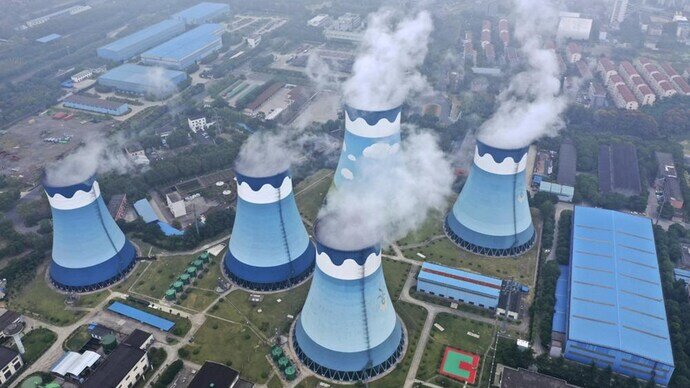Beijing, the capital of China and a pivotal hub of economic and industrial activity, is often metaphorically described as a “dragon” due to its significant role in driving national and global economic trends. However, this dragon’s breath—symbolic of the industrial emissions and environmental challenges associated with rapid economic growth—poses a serious threat to the city’s factories, industries, and overall environmental health. The pressing need to balance economic growth with environmental responsibility has never been more crucial.
This article explores the multifaceted challenges and opportunities in managing industrial emissions in Beijing. It examines the impact of these emissions on local industries and the environment, the steps being taken to mitigate these effects, and the broader implications for sustainable development.
The Industrial Powerhouse of Beijing
Beijing is not just the political and cultural heart of China; it is also a major economic powerhouse. The city is home to a diverse range of industries, including manufacturing, technology, and heavy industries. These sectors contribute significantly to both Beijing’s and China’s GDP. However, the rapid expansion of industrial activities has come at a cost.
1. Economic Significance:
- Industrial Base: Beijing’s factories and industrial facilities are critical to its economy. They produce everything from consumer goods to advanced technologies, playing a vital role in the supply chain of various sectors.
- Employment: The industrial sector provides jobs for a substantial portion of the city’s population, contributing to economic stability and growth.
2. Environmental Impact:
- Emissions: Industrial activities in Beijing have led to significant emissions of pollutants, including particulate matter (PM2.5), nitrogen oxides (NOx), and sulfur dioxide (SO2). These emissions contribute to air pollution, which has adverse effects on public health and the environment.
- Resource Consumption: High levels of industrial activity also lead to increased consumption of resources, including water and energy, further straining the city’s environmental sustainability.
The Challenge of Balancing Growth and Environment
The challenge for Beijing lies in balancing its economic ambitions with the need for environmental protection. The city’s industrial activities, while driving economic prosperity, also pose substantial risks to its environmental and public health. Key issues include:
1. Air Quality Concerns:
- Health Impacts: Air pollution from industrial emissions is linked to various health issues, including respiratory and cardiovascular diseases. Prolonged exposure can lead to severe health problems for the population.
- Environmental Degradation: High levels of pollutants contribute to environmental degradation, affecting ecosystems, water bodies, and urban landscapes.
2. Regulatory and Compliance Issues:
- Enforcement: Ensuring that industries comply with environmental regulations can be challenging. There is often a need for stricter enforcement and monitoring to ensure adherence to pollution control measures.
- Technological Adaptation: Many older factories may lack the latest technology for pollution control, requiring significant investment to upgrade facilities and processes.
3. Economic Implications:
- Costs of Compliance: Implementing and maintaining pollution control measures can be costly for industries, particularly for small and medium-sized enterprises (SMEs). Balancing these costs with economic viability is a significant challenge.
- Economic Transition: Shifting towards greener technologies and practices may require a transition period, during which industries need support and incentives to adapt.
Steps Towards a Sustainable Future
Beijing is actively working to address the environmental challenges associated with its industrial activities. Several initiatives and strategies are being implemented to mitigate the impact of emissions and promote sustainable development:
1. Policy and Regulation:
- Stringent Regulations: The Chinese government has introduced stringent environmental regulations aimed at reducing industrial emissions and improving air quality. These regulations include emission limits, mandatory pollution control technologies, and regular inspections.
- Incentives for Green Technology: Policies that provide incentives for adopting green technologies and practices are being promoted. These include tax breaks, subsidies, and grants for industries that invest in pollution control and sustainable practices.
2. Technological Innovations:
- Advanced Pollution Control Technologies: Beijing’s factories are increasingly adopting advanced pollution control technologies, such as scrubbers, filters, and catalytic converters, to reduce emissions and improve air quality.
- Energy Efficiency: Efforts are being made to enhance energy efficiency in industrial processes. This includes upgrading equipment, optimizing production methods, and utilizing renewable energy sources.
3. Public Awareness and Participation:
- Community Engagement: Public awareness campaigns and community engagement initiatives are crucial in promoting environmental responsibility. Educating the public about the impact of pollution and encouraging participation in pollution reduction efforts can drive positive change.
- Corporate Responsibility: Encouraging industries to adopt corporate social responsibility (CSR) practices related to environmental stewardship can lead to more sustainable operations and practices.
4. Green Industrial Policies:
- Eco-Industrial Parks: The development of eco-industrial parks that integrate environmental sustainability with industrial activities is being promoted. These parks focus on minimizing waste, optimizing resource use, and reducing environmental impact.
- Circular Economy: Embracing circular economy principles, where resources are reused and recycled, can help reduce waste and pollution associated with industrial activities.
The Broader Implications for Sustainable Development
The challenges faced by Beijing in managing industrial emissions have broader implications for sustainable development, both within China and globally:
1. Model for Other Cities:
- Urban Sustainability: Beijing’s efforts to balance economic growth with environmental responsibility can serve as a model for other cities grappling with similar issues. Lessons learned and best practices from Beijing can inform strategies for other urban centers.
- Global Standards: As one of the world’s leading economic hubs, Beijing’s approach to managing industrial emissions can influence global standards and practices for sustainable industrial development.
2. Long-Term Vision:
- Sustainable Growth: The ultimate goal is to achieve sustainable growth that harmonizes economic development with environmental preservation. This requires a long-term vision that integrates environmental considerations into economic planning and decision-making.
- Innovation and Collaboration: Continued innovation and collaboration between government, industry, and the public are essential for addressing environmental challenges and achieving sustainable development goals.
Disclaimer: The thoughts and opinions stated in this article are solely those of the author and do not necessarily reflect the views or positions of any entities represented and we recommend referring to more recent and reliable sources for up-to-date information.



